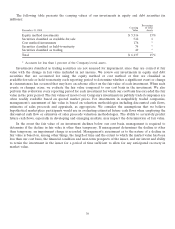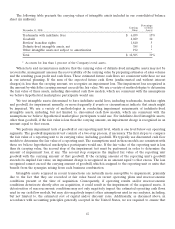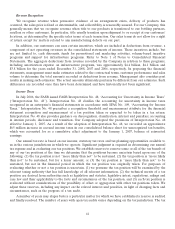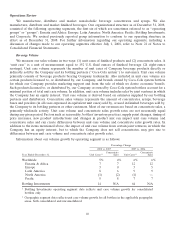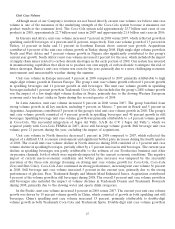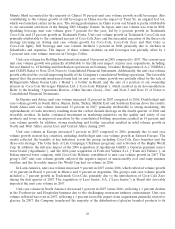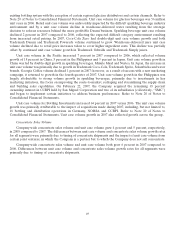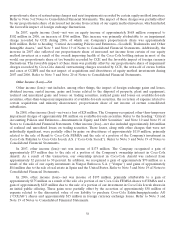Coca Cola 2008 Annual Report Download - page 51
Download and view the complete annual report
Please find page 51 of the 2008 Coca Cola annual report below. You can navigate through the pages in the report by either clicking on the pages listed below, or by using the keyword search tool below to find specific information within the annual report.existing bottling system with the exception of certain regional glac´
eau distributors and certain channels. Refer to
Note 20 of Notes to Consolidated Financial Statements. Unit case volume for glac´
eau beverages was 56 million
unit cases in 2006. Retail unit case volume was unfavorably impacted by the difficult sparkling beverage industry
environment and by a unit case volume decline in warehouse-delivered water resulting from the strategic
decision to refocus resources behind the more profitable Dasani business. Sparkling beverage unit case volume
declined 2 percent in 2007 compared to 2006, reflecting the expected difficult category environment resulting
from increased retail pricing. In 2007, Coca-Cola Zero had double-digit unit case volume growth and both
Trademark Dasani and Trademark Powerade volume continued to grow. Warehouse-delivered juice unit case
volume declined due to retail price increases taken to cover higher ingredient costs. This decline was partially
offset by continued unit case volume growth in Trademark Odwalla and Trademark Simply juices.
Unit case volume in the Pacific increased 7 percent in 2007 compared to 2006, which reflected volume
growth of 18 percent in China, 5 percent in the Philippines and 3 percent in Japan. Unit case volume growth in
China was led by double-digit growth in sparkling beverages, Minute Maid and Nestea. In Japan, the increase in
unit case volume was primarily due to growth in Trademark Coca-Cola, Trademark Sprite, Sokenbicha and water
brands. Georgia Coffee volume declined 1 percent in 2007; however, as a result of success with a new marketing
campaign, it returned to growth in the fourth quarter of 2007. Unit case volume growth in the Philippines was
largely attributable to strong volume growth in sparkling beverages, primarily due to investments in key
marketing initiatives, the focus on improving the route-to-market, reshaping and streamlining the supply chain
and building sales capabilities. On February 22, 2007, the Company acquired the remaining 65 percent
ownership interest in CCBPI held by San Miguel Corporation and two of its subsidiaries (collectively, ‘‘SMC’’)
and began to implement certain initiatives to address business performance. Refer to Note 20 of Notes to
Consolidated Financial Statements.
Unit case volume for Bottling Investments increased 64 percent in 2007 versus 2006. The unit case volume
growth was primarily attributable to the impact of acquisitions made during 2007, including, but not limited to,
18 bottling and distribution operations in Germany, NORSA and CCBPI. Refer to Note 20 of Notes to
Consolidated Financial Statements. Unit case volume growth in 2007 also reflected growth across the group.
Concentrate Sales Volume
Company-wide concentrate sales volume and unit case volume grew 4 percent and 5 percent, respectively,
in 2008 compared to 2007. The differences between unit case volume and concentrate sales volume growth rates
for all segments were primarily due to timing of concentrate shipments and the impact of unit case volume from
certain joint ventures, in which the Company is a partner but to which the Company does not sell concentrate.
Company-wide concentrate sales volume and unit case volume both grew 6 percent in 2007 compared to
2006. Differences between unit case volume and concentrate sales volume growth rates for all segments were
primarily due to timing of concentrate shipments.
49


